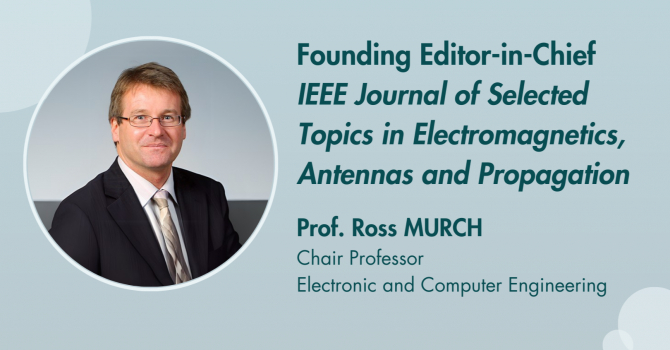HKUST Vice-President Prof Joseph Lee Wins State Scientific and Technological Progress Award
Prof Joseph Hun-wei Lee, Vice-President for Research and Graduate Studies at the Hong Kong University of Science and Technology (HKUST), and his research team have been presented a State Scientific and Technological Progress Award (SSTPA) (Second Class) 2010 by the Chinese State Council.
Prof Lee’s project “Buoyant jets in complex environments - theory, innovative technology and application” enables the prediction on the mixing and dilution of wastewater in complex ocean currents and leads to the development of a software that has worldwide applications in the design of facilities involving multiple sewage discharges on the marine environment.
The other core team members are Prof Wenping Wang, Prof Yuguo Li and Dr Valiant Cheung of the Faculty of Engineering, the University of Hong Kong, and Prof Hongwu Tang of Hohai University, Nanjing.
The SSTPA is conferred on scientific workers in the fields of science and technology who have made outstanding contributions. More than 680 nominated entries competed for SSTPA in 2010.
This award winning project from Hong Kong is based on environmental hydraulics and engineering research funded by the Croucher Foundation, the Hong Kong Research Grants Council and the Innovation and Technology Commission.
Prof Lee’s research makes global impact because the quantitative assessment of the impact of pollution on the environment is essential to the control of water pollution in an economical and sustainable manner. Too little waste treatment is harmful to the environment and excessive treatment costly and unnecessary. Environmental standards must be set in a scientific and rational manner to balance the benefits and costs to society.
Prof Lee’s team has developed theoretical and experimental research to unravel the complicated mechanisms underlying the fate and transport of pollutants in complex ocean currents and environmental conditions. They also developed a three-dimensional virtual reality computer modeling system called VISJET to predict and visualize the pollutant concentration and trajectory of wastewater released in any distributed manner from a submarine ocean outlet and under all weather conditions.
This ground-breaking technology enables accurate assessment of environmental and health risks. It also enables the interactive design of pollution discharge systems to utilize the natural purification capabilities of the environment. The modeling technology resulted in an environmental software that has made an international mark.
On the local front, the jet theory and computer models developed by Prof Lee’s team have also been effectively applied to projects in Hong Kong with significant social benefits. For example, they have been used for:
(1) The environmental impact assessment of the Hong Kong Harbour Area Treatment Scheme (HATS).
HATS is a multi-billion dollar environmental infrastructure project aimed to enhance the water quality and environment of Victoria Harbour and the surrounding waters. In such a water management scheme, the accurate prediction of pollutant concentration is a crucial design factor due to the presence of complex turbulent ocean currents and constantly changing environmental conditions, as well as the interaction of multiple discharges. The developed model and software successfully predicted the pollutant concentration changes during wastewater disposal, and enabled design optimization. It can also be used as a basis for real time water quality management by controlling disinfection dosages in response to tidal and source conditions.
(2) The Yuen Long Bypass Floodway (YLBF) Project
The YLBF Project aims to protect the town of Yuen Long from flooding by intercepting and diverting the fast upstream river flows. A unique hydraulic jet river junction design has been developed to overcome the significant back-water effect at the confluence between the fast and slow moving streams under very tight space constraints.
(3) Understanding the airborne transmissions in the Amoy Gardens SARS outbreak in 2003, and the isolation room ventilation design in hospitals.
The buoyant jet theory was used to understand the dispersion of exhaled droplets, and the interaction between the human body thermal plumes, and supply air jets in hospital ventilation. The design principles for isolation room ventilation were also adopted in nine hospitals in Hong Kong with over 800 isolation wards built in 2003-04.



